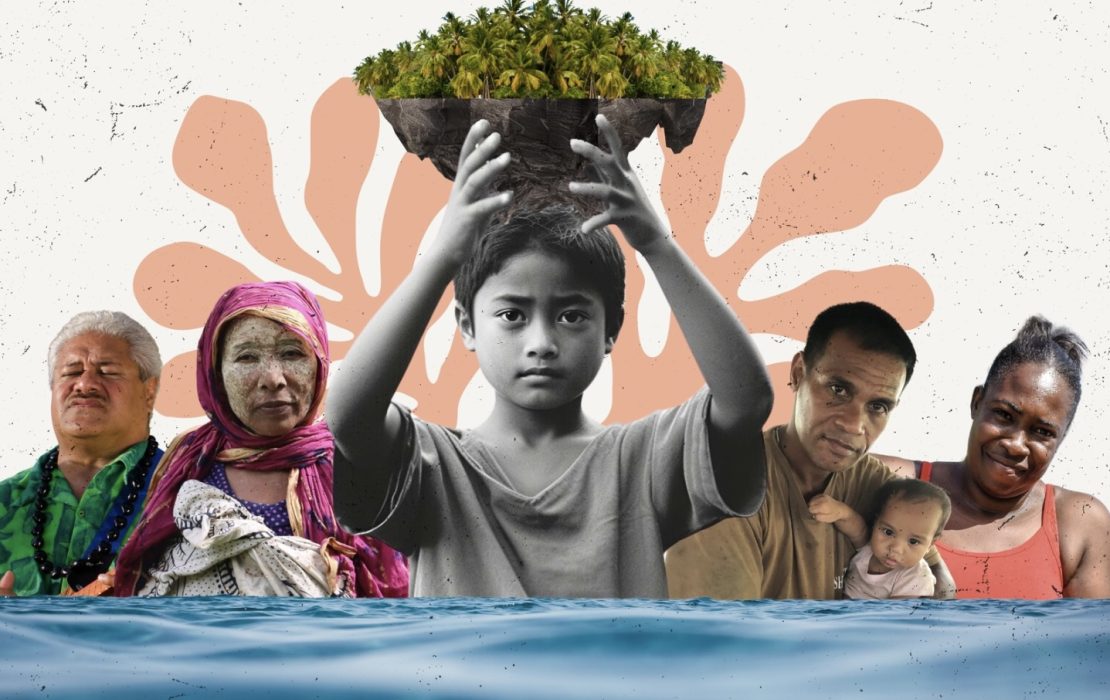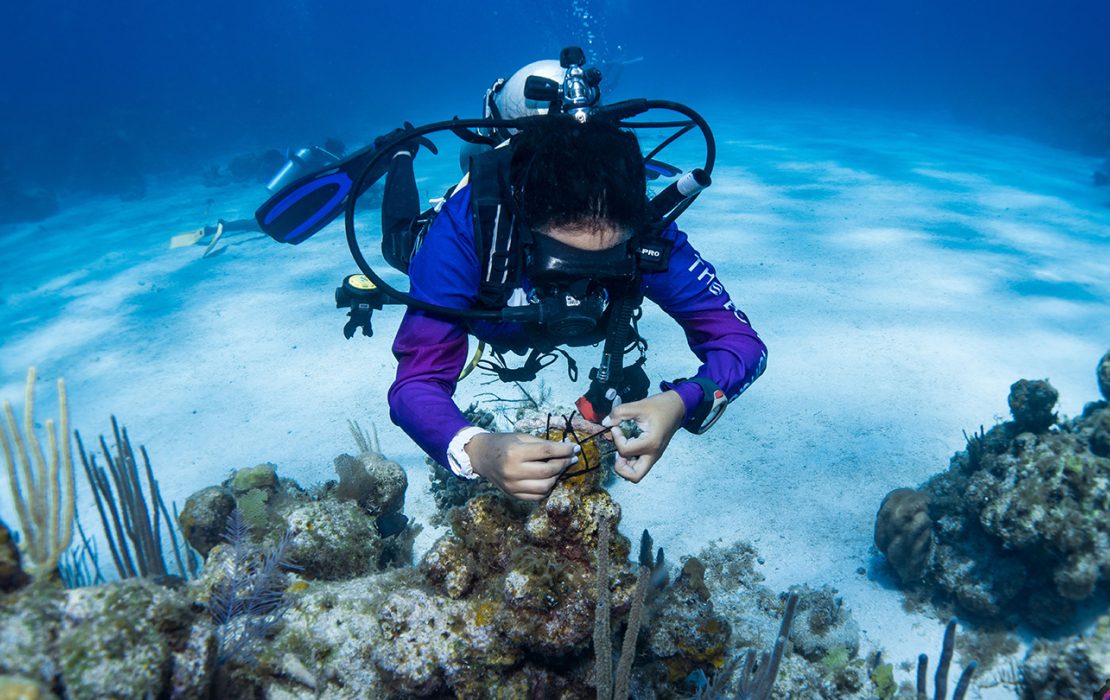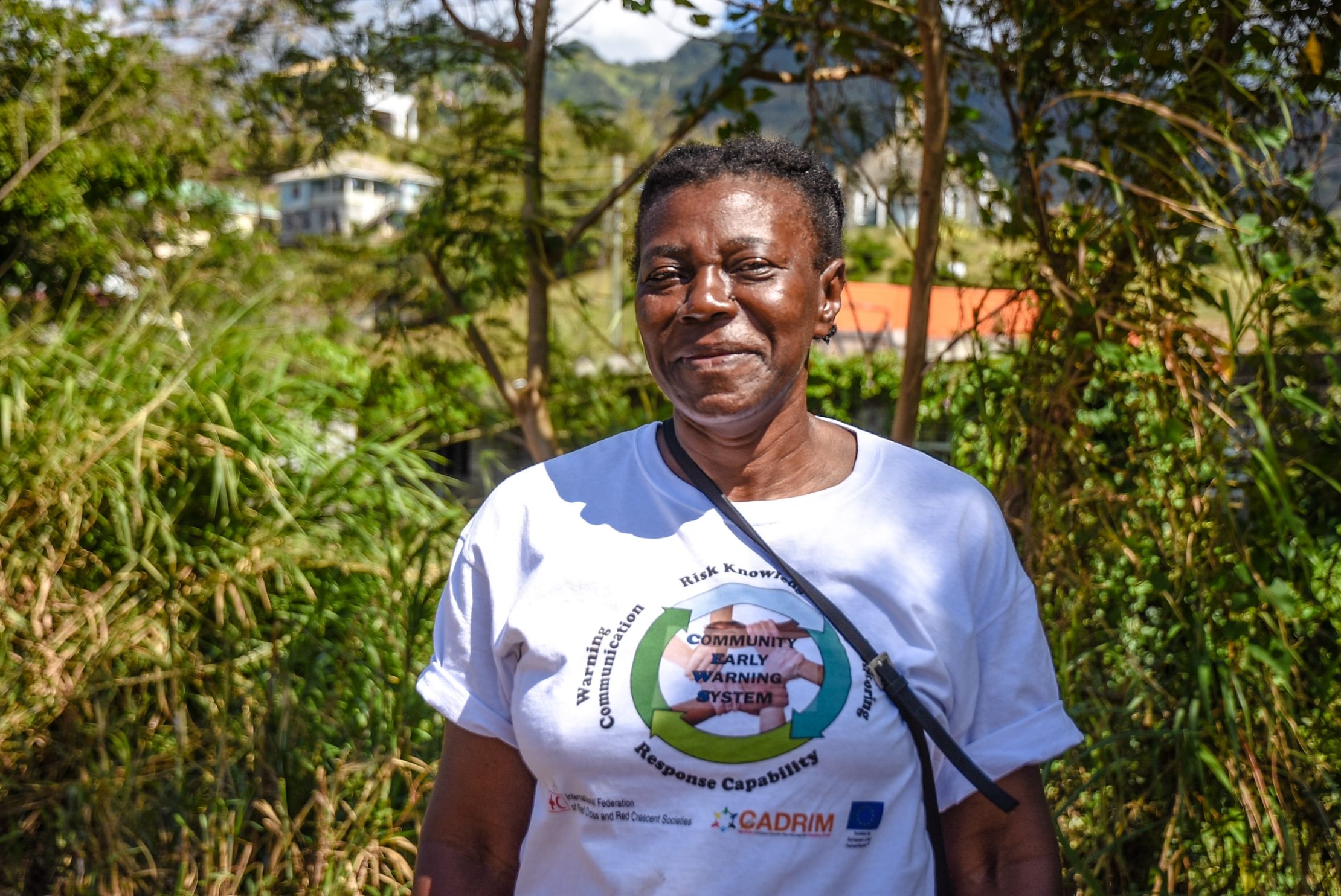
Photo: UNDP Barbados and the Eastern Caribbean/Zaimis Olmos
Caribbean countries are on the frontline of climate change. From rising sea levels and stronger hurricane seasons to water scarcity and coastal erosion, these countries—many of which are Small Island Developing States (SIDS)—see their development directly impacted by the climate crisis.
Although they are responsible for only one percent of global greenhouse gas emissions, Caribbean states have set out ambitious mitigation and adaptation commitments in their national climate plans, also known as Nationally Determined Contributions (NDCs), to achieve the goals of the Paris Agreement.
In a recent analysis, the University of the West Indies and UNDP have looked at how seven CARICOM countries—Antigua and Barbuda, Barbados, Belize, Dominica, Saint Lucia, Suriname and Trinidad and Tobago—are implementing the actions in their existing NDCs and how the next round of climate pledges can be improved based on these experiences.
The analysis also pointed to several challenges that the region is facing when implementing solutions. These include lack of technical capacity and institutional coordination, systemic barriers in accessing climate finance which deepen already high national debt burdens, and the need to empower regional institutions to be part of the solutions.
Despite the challenges, these seven SIDS are making significant progress on climate solutions to mitigate and adapt to climate change.
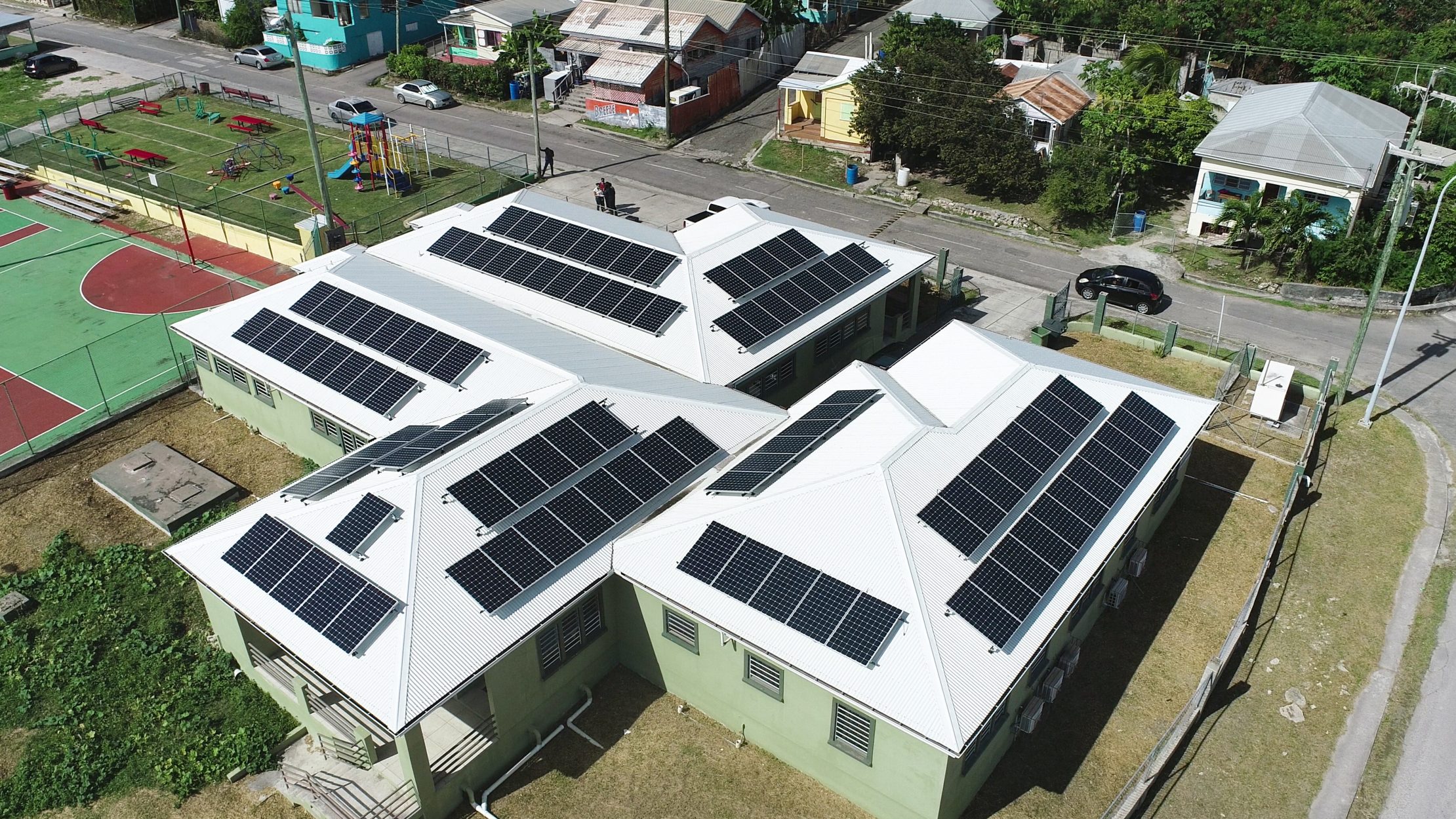
In its national climate plan, Antigua and Barbuda laid out plans to install sustainable energy systems to produce 100 megawatts of electricity – enough to power tens of thousands of homes. Photo credit: Government of Antigua and Barbuda
Antigua and Barbuda
In its current NDC, Antigua and Barbuda set an ambitious goal: by 2030, nearly one-third of its electricity will come from renewable sources. To achieve this, Antigua and Barbuda plans to install solar panels, wind turbines and other sustainable energy systems to produce 100 megawatts of electricity – enough to power tens of thousands of homes.
In addition, the country has taken steps to decarbonize its transport system, introducing tax exemptions for electric vehicles and creating a specialized team to guide the transition to electric and hybrid mobility. It is also working to foster the adoption of energy efficiency measures in small- and medium-sized businesses.
The country is also increasing its resilience to climate change impacts, focusing on three areas: protecting its coastlines from rising sea levels, building stronger infrastructure for extreme weather events and helping communities better prepare for climate risks. Even though it has been challenging to put these measures into practice, due in great part to limited funding and lack of technical capacity, there has been important progress in different areas, including on improved water management during droughts and coastal risks evaluation.
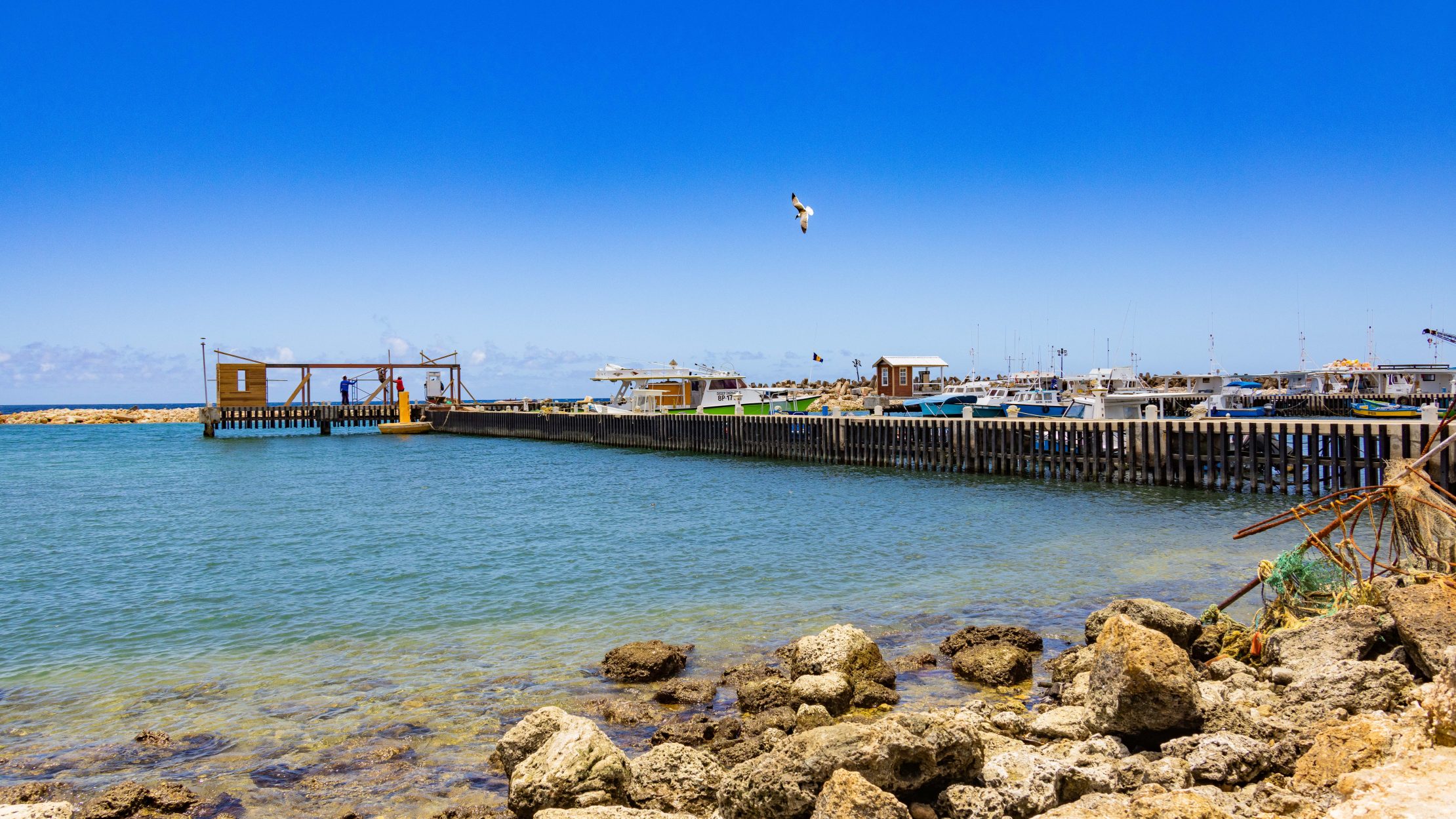
To adapt to climate change, Barbados is focusing on protecting its coasts, securing water resources, building resilient infrastructure and promoting smarter and more sustainable land use. Photo credit: UNDP Barbados and Eastern Caribbean/MarNiko Media
Barbados
Barbados’s mitigation targets are among the most transformative in the region. In 2021, the country had set out plans to cut nearly half of its emissions by 2030 and to have all its electricity come from renewables by 2035. Additionally, in its latest NDC, submitted in August 2025, the country committed to reducing 95 percent of emissions from the energy sector by 2035.
Significant progress is already underway. In 2024, 15 percent of the country’s electricity came from renewable sources, driven by the widespread installation of solar panels. To decarbonize the transport sector, the government is integrating electric vehicles in its own operations and removing import taxes. At the same time, Barbados is helping homes and businesses reduce energy use by improving building standards and launching programmes that make energy-saving easier.
To adapt to climate change, the country is focusing on four main areas: protecting its coasts, securing water resources, building resilient infrastructure and promoting smarter and more sustainable land use. One key achievement is the reduction of flash flooding in Holetown, a busy tourist area. Another is the launch of the first debt-for-climate-resilience operation, which eases the country’s debt burden and unlocks resources to finance the transformation of a sewage treatment plant into a modern water reclamation facility, ensuring the production of water for use in agricultural irrigation and groundwater recharge.
To help communities become more resilient, Barbados is also investing in early warning systems and better access to climate information and has included a section on loss and damage in its new NDC.

Belze has been including climate risks into national planning, with special attention given to gender equality and youth involvement. Photo credit: UNDP/SGP Belize
Belize
In its previous NDC submitted in 2021, Belize had committed to reducing 5.6 million tonnes of greenhouse gas emissions between 2021 and 2030. In its latest NDC submitted in 2025, the country set a new goal to reduce 6.2 million tonnes by 2035. Belize plans to achieve this by protecting forests, expanding renewable energy and transforming the transport sector.
Through an active participation in the REDD+ programme, Belize is ensuring a large part of its land is kept as forest and working closely with local communities to manage these areas.
In the energy sector, Belize is working toward sourcing 75 percent of its electricity from renewable sources by 2030. In pursuit of a low-emission public transport system, the country is testing electric vehicles and e-mobility options adapted to the local context. The country has also become a regional leader in ecosystem-based adaptation, with long-term efforts to restore mangroves and protect coral reefs. These initiatives help ecosystems recover more effectively from climate impacts while shielding communities from storms and other risks.
Another major step forward has been including climate risks into national planning. This means Belize’s climate challenges and sector-specific adaptation strategies now help guide decisions on land use, tourism and water management, with special attention given to gender equality and youth involvement.
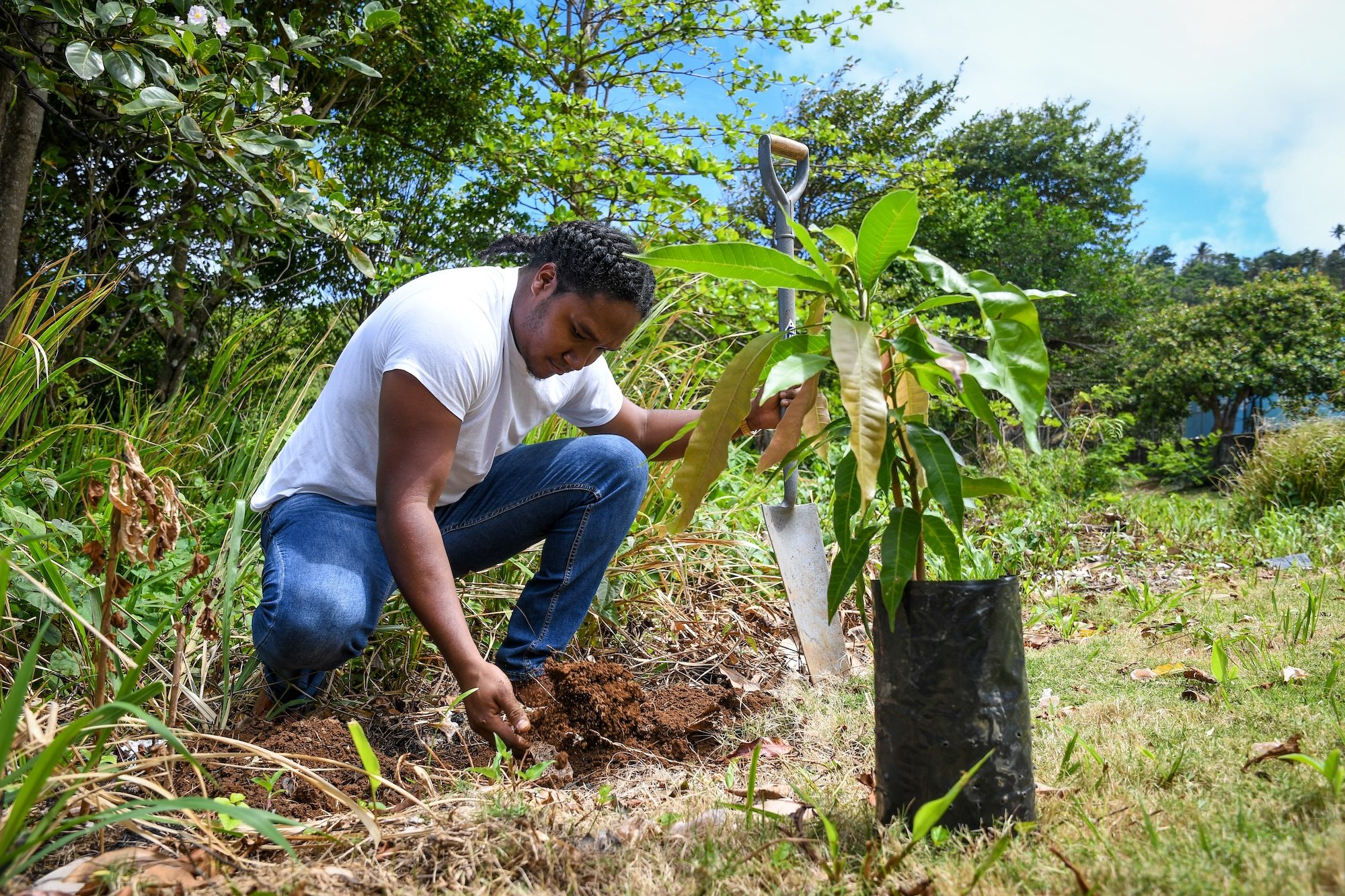
Dominica is focusing on reforestation and promoting agroforestry practices that help absorb carbon from the atmosphere and protect water resources. Photo: UNDP Barbados and the Eastern Caribbean/Zaimis Olmos
Dominica
Dominica is implementing actions to cut its greenhouse gas emissions by nearly half by 2030. A major part of the country’s climate action plan is to stop relying on diesel to produce electricity. Instead, a new geothermal power plant under construction in Laudat will use natural underground heat to produce sustainable energy.
The country is also focusing on reforestation and promoting agroforestry practices that help absorb carbon from the atmosphere and protect water resources. Alongside these efforts, Dominica is promoting low-emission transport options and energy efficiency in the public sector.
Dominica stands out in the Caribbean for its strong progress in climate adaptation, with 97 percent of the priority actions included in its national climate plans already set in motion. These actions are led by a clear strategy, the Climate Resilience and Recovery Plan, and strong leadership from the Climate Resilient Executing Agency of Dominica, created after the devastation caused by Hurricane Maria in 2017.
Some key adaptation initiatives include building infrastructure that protects from floods (e.g. reinforced river walls), constructing hurricane-resilient housing and supporting climate-smart agriculture practices like planting drought-resistant crops.

Saint Lucia is working to become more resilient to climate change impacts, especially in sectors like water, agriculture, fisheries, health and infrastructure. Photo credit: UNDP Barbados and the Eastern Caribbean/Zaimis Olmos
Saint Lucia
In its NDC submitted in 2021, Saint Lucia committed to reducing its greenhouse gas emissions by 23 percent by 2030, largely focusing on energy generation. In February 2025, Saint Lucia submitted new targets, aiming for a 22 percent emissions reduction from the energy sector by 2035 and highlighting the importance of gender equality, social inclusion, and youth involvement in climate adaptation and mitigation.
Saint Lucia is working to become more resilient to climate change impacts, especially in sectors like water, agriculture, fisheries, health and infrastructure. These efforts follow the country’s National Adaptation Plan (2018-2028). The country is also tackling health risks linked to climate change – such as the spread of dengue fever – by improving disease tracking and educating communities. It is also working to reduce chronic flooding in urban areas, with cities such as Castries and Anse La Raye upgrading their drainage systems.
Saint Lucia has also installed a 5-megawatt solar power plant, expanding its supply of renewable energy. In parallel, public buildings have been upgraded with energy-saving improvements. The transport sector is also evolving: a newly developed national policy now supports electric vehicles and strengthens fuel efficiency standards, paving the way for sustainable mobility. All these initiatives are guided by Saint Lucia’s institutionalized National Energy Transition Strategy.
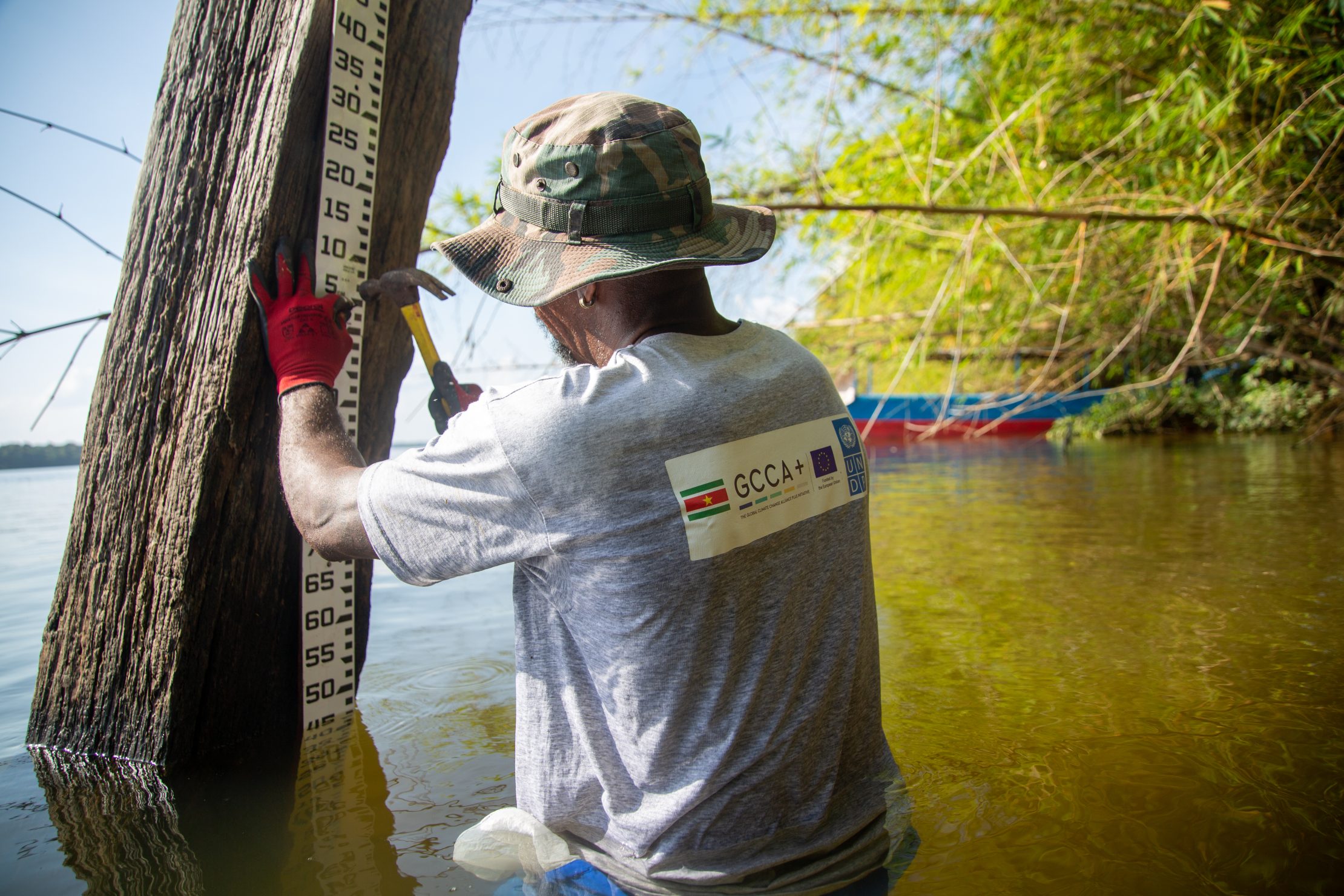
Suriname is especially at risk from rising sea levels, coastal erosion and saltwater intrusion into freshwater areas, particularly along the populated northern coastline. Photo credit: UNDP Suriname/Harvey Lisse
Suriname
Suriname is one of the world’s few carbon-negative countries. Its forests and ecosystems, which cover 93 percent of the country’s land, absorb more carbon than the country emits. In 2019, the country set a mitigation target that focuses on maintaining this status while gradually cutting emissions in key sectors like energy, agriculture and transport.
To support this, Suriname has been actively engaged in REDD+ initiatives that strengthen forest conservation and sustainable land management. It’s also expanding renewable energy to remote communities through solar mini-grids and rural electrification programmes.
Because much of the country sits just above sea level and is covered by forests it’s especially at risk from rising sea levels, coastal erosion and saltwater intrusion into freshwater areas, particularly along the populated northern coastline. To address these issues, some of the main adaptation efforts include restoring mangroves along the Coronie and Nickerie coasts, upgrading irrigation systems to promote climate-resilient agriculture in interior regions, and rolling out climate-related disease monitoring to track illnesses like dengue and malaria as temperatures rise.
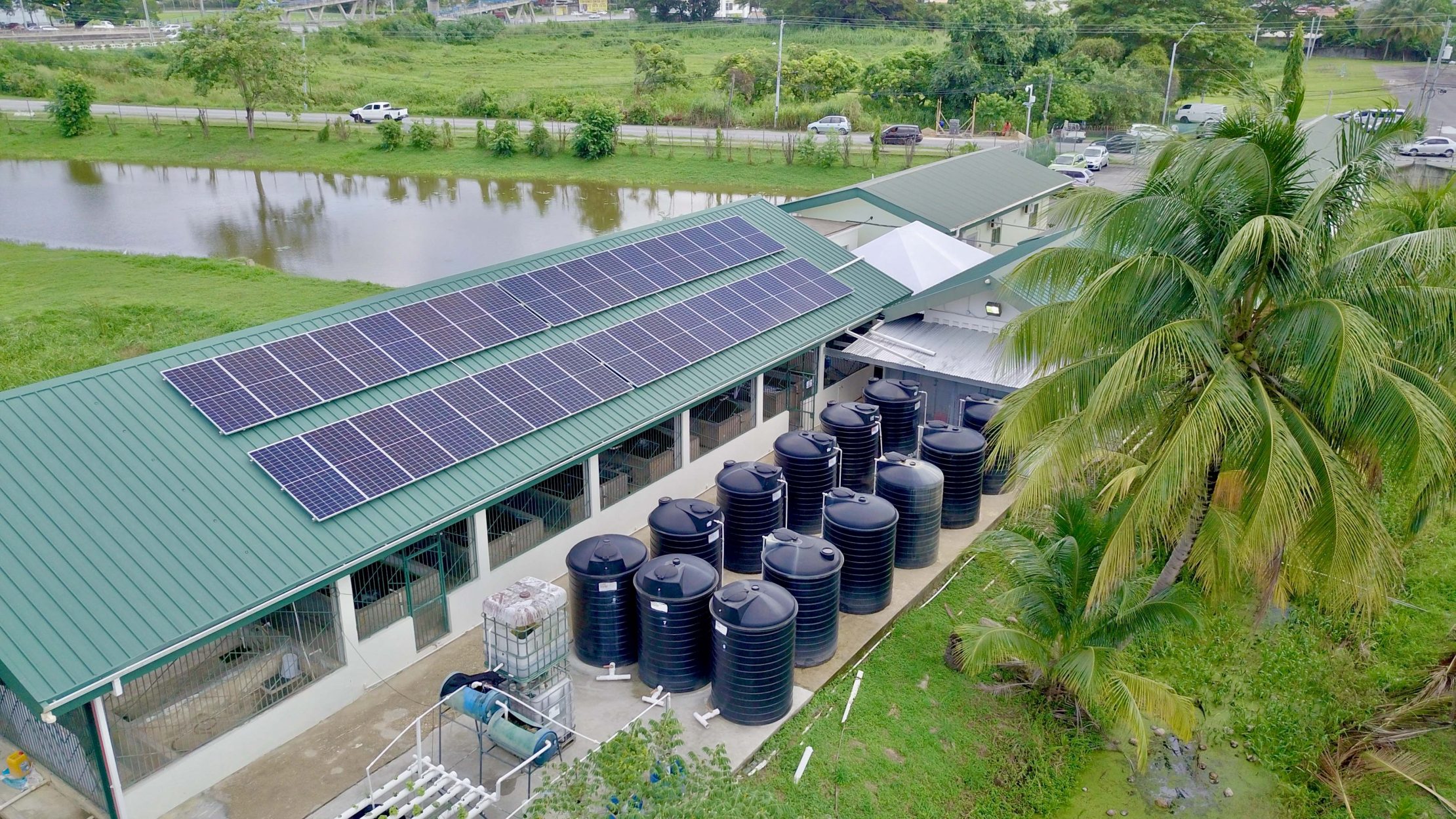
Trinidad and Tobago committed to cutting greenhouse gas emissions by 15 percent by 2030, focusing on the energy, transportation and industry sectors. Photo credit: UNDP Trinidad and Tobago
Trinidad and Tobago
In its NDC submitted in 2018, Trinidad and Tobago committed to cutting greenhouse gas emissions by 15 percent by 2030, focusing on the energy, transportation and industry sectors.
To reach this goal, the country has created several plans, including the Carbon Reduction Strategy and measurement, reporting and verification plans for key sectors to track progress towards climate goals. Furthermore, it has initiated a roadmap for using green hydrogen and is considering technologies that capture carbon.
Trinidad and Tobago’s first National Adaptation Plan (NAP), which was submitted in 2024, identified key vulnerabilities to climate change impacts such as rising sea levels, increasing frequency of extreme weather events and threats to coastal ecosystems.
To respond to these risks, the country is integrating measures across areas such as water resources, agriculture, health and infrastructure. One major step forward is the creation of 15 sector-specific Climate Resilient Development Pathways, designed to guide targeted adaptation actions and investments.
The NAP also stresses the need to strengthen institutions and involve a wide range of stakeholders, from government entities to civil society organizations. It calls for strong systems to monitor progress and adjust policies as needed, ensuring that climate efforts make a real and lasting difference.
*
Editor’s note: As part of its Climate Promise, UNDP works in coordination with key partners to support SIDS to prepare and implement their NDCs. UNDP is currently providing support to 17 SIDS under Climate Promise 2025. Through this tailored support, SIDS are able to develop and submit high-quality and ambitious NDCs that increase emissions reductions targets, and include new sectors and cross-cutting areas such as gender, youth, loss and damage, nature-based solutions and just transition.
